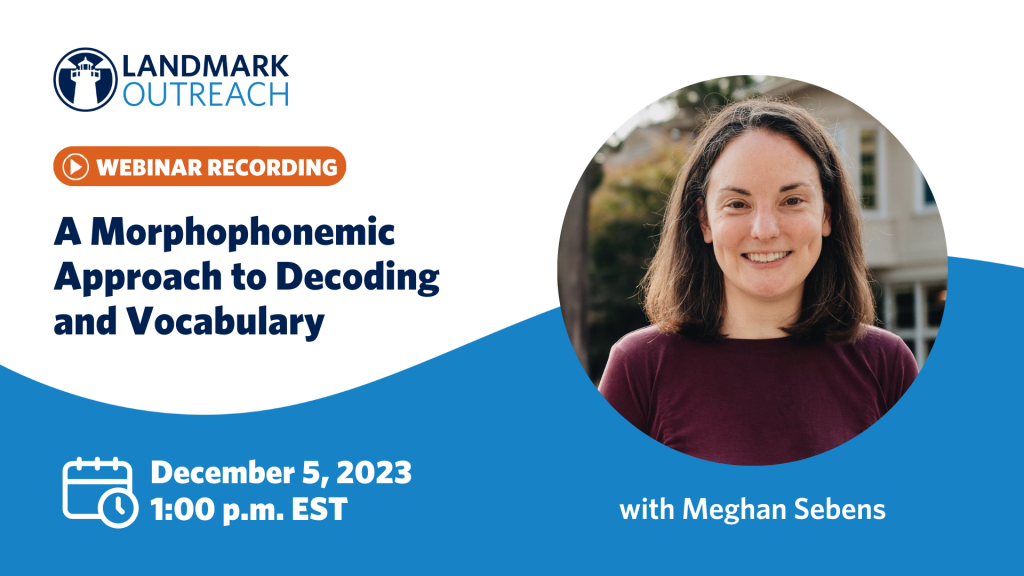Definitions
- Phonemes are the individual sounds in spoken words.
- Phonemic awareness is the ability to hear, identify, and manipulate phonemes (individual speech sounds) in spoken words. For instance, there are three phonemes in the word ‘tree’ (/t/ /r/ /ē/).
- Phonological awareness is “the ability to recognize and manipulate the sound properties of spoken words such as syllables, initial sounds, rhyming parts, and phonemes” (Kilpatrick, 2021, p. 13). For example, phonological awareness skills enable students to recognize that ‘tree’ and ‘free’ rhyme or to identify the three syllables in the word ‘umbrella’ as /ŭm/-/brĕ/-/lə/.
Note: Phonemes in spoken words are represented with forward slashes. For example, the speech sound represented by the first letter in fast and the last two letters in stuff would be written as /f/.
Why is Phonemic Awareness Important?
Extensive research indicates that phonemic awareness is “a critical foundational skill for reading” (IDA, 2022). Being able to identify and manipulate the sounds in words is an essential component of reading development; when students develop an understanding that words are made up of different sounds, they can more easily associate those unique sounds with letters, connect those letters to form words, and chunk words together to read phrases, sentences, and passages.
For example, phonemic awareness may involve blending individual sounds together to make a word (e.g., /g/ and /ō/ make ‘go’) or breaking apart a word into its component phonemes (e.g., ‘seat’ is made up of /s/, /ē/, /t/). Phonemic awareness tasks can include:
- Identification
- Teacher says: Can you tell me the first sound in ‘pig’?
- Student says: /p/
- Blending
- Teacher says: I’m going to say individual sounds and I want you to blend the sounds together to make a word. The sounds are /m/ /ă/ /t/.
- Student says: ‘Mat’
- Segmenting
- Teacher says: I’m going to say a word and I want you to break the word into its individual sounds. What are the sounds in ‘shut’?
- Student says: /sh/ /ŭ/ /t/
- Deletion
- Teacher says: I’m going to say a word and then delete a sound. You need to tell me what the new word is. First, say the word after me: ‘sled’
- Student says: ‘Sled’
- Teacher says: Now say ‘sled’ but don’t say /s/
- Student says: ‘Led’
- Substitution
- Teacher says: I’m going to say a word and then change a sound. You need to tell me what the new word is. First, say the word after me: ‘chip’
- Student says: ‘Chip’
- Teacher says: Great. Now say ‘chip’ but instead of /ch/ say /sh/
- Student says: ‘Ship’
*Teacher wording for deletion and substitution tasks attributable to Kilpatrick, D. (2021)
Distinguishing Between Phonological Awareness and Phonemic Awareness
Phonemic awareness is a subskill within the overarching category of phonological awareness. Although phonemic awareness is sometimes confused with or used interchangeably with phonological awareness, it is important to differentiate between them because phonemic awareness is the aspect of phonological awareness most important for reading success. Phonological awareness involves “breaking down words into smaller units” that include syllables, onset and rimes, as well as phonemes (Gillon, 2018, p. 4).
These different levels of phonological awareness are listed below:
- Syllables – For example, the word ‘elephant’ is made up of three syllables (/ĕ/-/lə/-/phənt/) while the word ‘seven’ is made up of two syllables (/sĕ/-/vən/).
- Onset and rime – The onset of a word is the consonant or consonant blend before the vowel in a syllable, while the rime is the part of the syllable from the vowel on. For example, the word ‘dog’ is made up of onset /d/ and rime /ŏg/. Words containing the same rime pattern (i.e., vowel sound and subsequent consonants) but different onsets (i.e., initial consonants before the vowel sound) will rhyme, such as ‘dog’, ‘fog’, and ‘log’.
- Alliteration – Alliteration generally refers to the repetition of the initial consonant sound in words. Moats (2020) provides the following as an example of alliteration: “Peter Piper picked a peck of pickled peppers” (p. 82).
- Phonemes – the individual sounds in spoken words (i.e., phonemic awareness).
It is important to note that all phonological awareness skills involving units larger than phonemes (i.e., syllables, onset-rimes, alliteration) are commonly referred to as phonological sensitivity.
Signs of Poor Phonemic Awareness
Deficits in phonological awareness more generally, and phonemic awareness specifically, have been identified in children with dyslexia (Gillon, 2018, 77-78). The International Dyslexia Association’s definition of dyslexia highlights that the challenges characteristic of dyslexia (i.e., poor word recognition, decoding, and spelling) “typically result from a deficit in the phonological component of language” [emphasis added] (IDA, 2002). As such, screening for phonemic awareness difficulties is important in identifying early risk for dyslexia (Massachusetts Department of Elementary & Secondary Education [MA DESE], n.d.).
Common signs of phonemic awareness difficulties include difficulty distinguishing sounds, difficulty identifying the number of sounds in a word, and difficulty sequencing sounds accurately in words. View the video below for examples of ways in which students might struggle with phonemic awareness.
Additionally, students who demonstrate difficulty with phonemic awareness most likely have a phonological processing disorder, which makes hearing, identifying, and manipulating individual sounds, or phonemes, in words particularly challenging. These students often have difficulty connecting letters to sounds, as well as decoding accurately. Similarly, students with phonological processing disorder often struggle to move through Jeanne Chall’s first stage of reading development, “Initial Reading and Decoding,” due to their difficulty with accurately discriminating speech sounds.
The importance of providing phonemic awareness instruction to support reading development cannot be overstated. Without this fundamental skill, students are at a significant disadvantage as they begin connecting sounds to letters and decoding written words.
References
Gillon, G.T. (2018). Phonological awareness: From research to practice (2nd ed.). The Guilford Press.
Kilpatrick, D.A. (2021). Equipped for reading success: A comprehensive, step-by-step program for developing phonemic awareness and fluent word recognition. Casey & Kirsch Publishers.
International Dyslexia Association. (2002, November). Definition of dyslexia. https://dyslexiaida.org/definition-of-dyslexia/
International Dyslexia Association. (2022). Building phoneme awareness: Know what matters. https://dyslexiaida.org/building-phoneme-awareness-know-what-matters/
Massachusetts Department of Elementary and Secondary Education. (n.d.). Massachusetts dyslexia guidelines. https://www.doe.mass.edu/sped/dyslexia-guidelines.pdf
Moats, L. C. (2020). Speech to print: Language essentials for teachers (3rd ed.). Paul H. Brookes Publishing Company.

